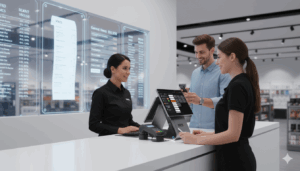Three months ago, I was ready to lose my mind. We had DoorDash orders coming through one tablet, Uber Eats on another, GrubHub on their own device, plus our website orders on yet another system. My kitchen looked like Best Buy exploded in there.
Every order meant running between different devices, manually entering everything into our POS, trying to keep track of what belonged to which platform. Half the time orders got mixed up, delivery drivers were confused, and my kitchen staff wanted to quit.
Then my buddy Carlos told me about how PAYS POS connects everything together. I thought he was pulling my leg. Turns out he wasn’t.

The Tablet Nightmare is Real
If you’re running delivery and online ordering, you know what I’m talking about. Every platform wants you to use their tablet, their system, their way of doing things. Before you know it, your counter looks like mission control.
Each tablet has different sounds, different layouts, different ways to mark orders ready. My staff was constantly confused about which beep meant what, which screen showed which orders.
Worst part? None of it talked to our POS system. So we’d get a DoorDash order, write it down by hand, then punch it into our regular system. Double work for everything.
How PAYS Actually Connects Everything
Here’s what blew my mind about PAYS integration. All those delivery orders – DoorDash, Uber Eats, GrubHub, whatever – they all show up right in your regular POS system. Same screen, same workflow, same everything.
No more tablets cluttering up your counter. No more running around checking different devices. Everything comes through one system that your staff already knows how to use.
When a delivery order comes in, it looks just like a regular order in PAYS. Same ticket, same kitchen printer, same process. My cooks don’t need to learn different procedures for different platforms.
Kitchen Life Gets Way Simpler
We opened a second location last year. With our old system, that would’ve meant double the tablets, double the confusion, double the headaches.
With PAYS, adding the new location was simple. Same integration, same workflow, but I can see both places separately or together. When I check sales on my phone, I can see how each location is doing with delivery orders.
Inventory Actually Makes Sense Now
Before PAYS integration, our inventory was a disaster. We’d sell out of something for dine-in customers but forget to turn it off on delivery platforms. Or we’d run low on ingredients but have no idea how much was going to delivery versus restaurant sales.
Now when we sell a burger, the system knows it’s a burger whether someone ordered it in person, through DoorDash, or from our website. Inventory gets updated the same way every time.
Last week we were running low on chicken wings. The system automatically marked wings as unavailable on all platforms at the same time. No more angry calls from delivery drivers about items we don’t have.
Money Tracking That Works
Trying to figure out how much money we made from delivery versus dine-in used to be a nightmare. Different platforms, different payment methods, different reporting periods.
PAYS shows everything together but keeps it separated when you need details. I can see total daily sales in one number, or break it down by DoorDash, Uber Eats, dine-in, whatever.
End of day reports make sense now. Instead of adding up numbers from five different systems, everything’s right there in one place.
Staff Training Stays Simple
When we hire new people, I don’t want to spend hours teaching them how to use four different tablet systems. With PAYS integration, they learn one system and they’re good for everything.
New cook starts Monday? Show them the POS screen and the kitchen printer. That’s it. They don’t need to know which orders came from where – they just cook what’s on the ticket.
Same with front of house staff. They can help with delivery orders, dine-in orders, takeout orders, all using the same system they already know.
Customer Experience Gets Better
Here’s something I didn’t expect – customers started noticing better service. Orders are more accurate because there’s no manual re-entering. Wait times are more reliable because we can see everything in one place.
When delivery customers call with questions, we can find their order immediately in the same system we use for everything else. No more “let me check three different tablets to find your order.”
Plus, when items are out of stock, all platforms update at the same time. Customers don’t order something we can’t make, then get frustrated waiting for refunds.
The Setup Actually Worked
I was worried about connecting everything to PAYS. Figured it would be complicated, take forever, probably break something.
Turns out the setup was pretty straightforward. PAYS team handled most of it. We gave them access to our delivery accounts, they did the technical stuff, and within a couple days everything was connected.
No downtime, no lost orders, no drama. Just woke up one morning and all our delivery orders were showing up in the POS system.
Real Numbers That Matter
Since connecting everything through PAYS, we’ve seen some pretty cool improvements. Order accuracy went up because there’s no manual re-entering. Kitchen times got faster because orders flow better.
Revenue tracking is way more accurate. We found out delivery was actually 35% of our business, not the 20% we thought. That changed how we think about staffing and inventory.
Food costs make more sense too. We can see which menu items are profitable across all channels, not just dine-in sales.
Managing Multiple Locations
My kitchen used to be chaos during dinner rush. Tickets printing from different places, orders getting mixed up, drivers showing up asking about orders we couldn’t find.
Now everything prints on the same kitchen tickets in the order they came in. DoorDash order at 6:15, walk-in order at 6:16, Uber Eats at 6:17 — they all get made in sequence, no confusion about priorities.
The tickets look identical whether it’s delivery or dine-in. Same layout, same information, same cooking instructions. My cooks treat every order exactly the same way.
The Bottom Line
Look, delivery and online ordering aren’t going anywhere. If anything, they’re getting bigger. You can either fight with a bunch of different systems that don’t talk to each other, or you can get everything connected properly.
PAYS integration isn’t magic – you still need good food and good service. But it stops technology from getting in the way of running your business.
Instead of managing five different systems, you manage one. Instead of training staff on multiple tablets, they learn one workflow. Instead of guessing about your numbers, you see everything clearly.
My counter isn’t cluttered with tablets anymore. My kitchen runs smoother. My staff is less frustrated. And I actually understand how much money we’re making from delivery versus dine-in.
If you’re drowning in tablets and wondering how all these delivery orders fit into your business, maybe it’s time to look at getting everything connected properly. Your staff will thank you, your kitchen will run better, and you’ll finally have clear numbers about what’s actually happening in your restaurant.



